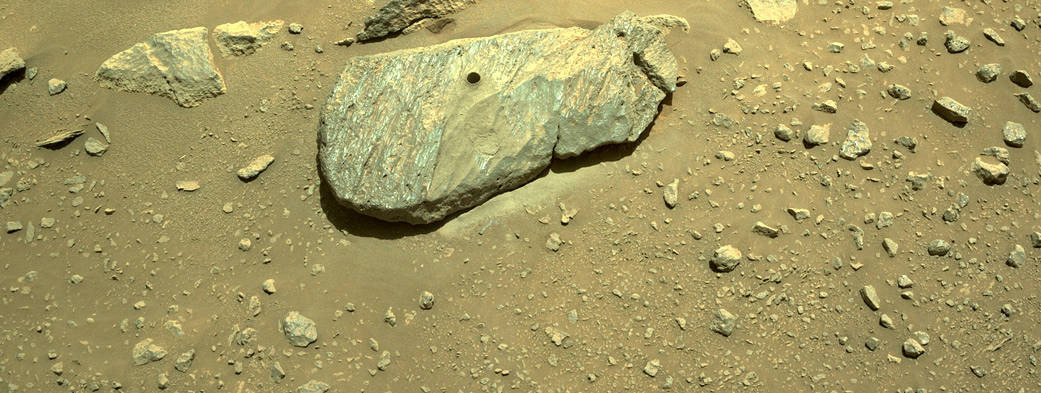This composite of two images shows the hole drilled by NASA’s Perseverance rover during its second sample-collection attempt. The images, which were obtained by one of the rover’s navigation cameras on Sept. 1, 2021 (the 190th sol, or Martian day, of the mission), were taken in the “Crater Floor Fractured Rough” geologic unit in Mars’ Jezero Crater. The team nicknamed the rock “Rochette” for reference and the spot on the rock where the sample was cored “Montdenier.”
A key objective for Perseverance’s mission on Mars is astrobiology, including the search for signs of ancient microbial life. The rover will characterize the planet’s geology and past climate, pave the way for human exploration of the Red Planet, and be the first mission to collect and cache Martian rock and regolith (broken rock and dust).
Subsequent NASA missions, in cooperation with ESA (European Space Agency), would send spacecraft to Mars to collect these sealed samples from the surface and return them to Earth for in-depth analysis.
The Mars 2020 Perseverance mission is part of NASA’s Moon to Mars exploration approach, which includes Artemis missions to the Moon that will help prepare for human exploration of the Red Planet.
JPL, which is managed for NASA by Caltech in Pasadena, California, built and manages operations of the Perseverance rover.
Image Credit: NASA/JPL-Caltech



























